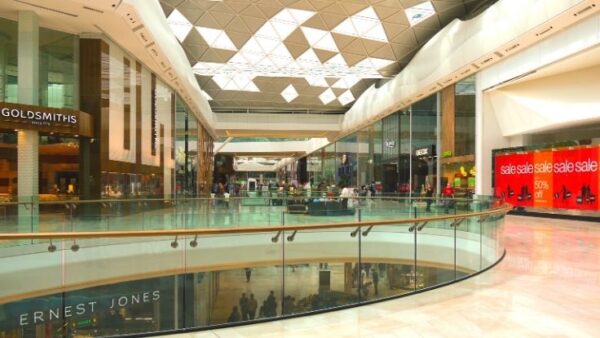When investing in real estate for rental purposes, owners should decide what they want to do with their space. Many factors can help owners and managers to estimate whether they should choose to hire long-term or short-term. Most of the time, this decision is easily made and depends on the nature of your own space and what you want to achieve. However there are a few advantages and disadvantages to these two methods of hiring let’s explain the advantages and disadvantages of the two:
What is a temporary or short term rental?
Before anything else, let’s get acquainted with the definition of temporary leases. Time rental leases are short-term leases. Depending on the owner, rental property and many other items, these buildings are rented weekly or nightly. Many short-term rental owners rent their property for most of the year when they do not use it themselves; it has become a popular alternative to many problems.
Related Post: How much is rent in a mall in Mumbai?
While long-term employment offers consistent income and is generally easier to manage, there are several benefits to considering short-term renting instead:
1. High rental income
Not only can you set the changing prices depending on your season high and low, but you can also set the duration of your most popular time of the year to ensure maximum profit.
2. More flexibility
For owners who rent their properties for a short period of time, there are many more variables involved for you and your own. You can directly block calendar times that you want to keep free for personal use without disturbing anyone.
3. Minor aging
Typically, the duration of a rental contract ranges from a few days to a few weeks. Welcoming people with short bursts like these ensures that person your property simply uses your property and do not redesign it.
4. Tax breaks and deductions
Many rental owners are entitled to certain tax breaks or even withholding costs because property is not permitted for a long time. Be sure to check your local laws and regulations in this regard.
5. Contribute to a sharing economy
We hear a lot these days about the economy being shared and its positive effects on the wider community. By allowing your space to be shortly used by others, you show that you are a designer who helps to contribute to this modern way of life and thinking.
6. Changing the management of assets
Advances in technology, such as smart apps or smart locks, have made it easier to manage rentals or made the process easier through websites like www.myrsa.in .
Challenges of short-term rentals
When managing temporary employment, you will need to consider local laws, property maintenance and slower periods.
1. More maintenance and development
The owner needs to keep inventory safe or he may receive negative updates. This includes more than just regular repairs, such as plumbing and paint repairs, as well as technological changes and modern inventions. You will need to renew your rental services more often to include all essentials and it can come at a higher price.
2. Guaranteed income
One setback for short-term rental property owners is no guaranteed income eg no fixed or booked leases. Sometimes there is no rent for one month or so.
3. Competition from surrounding areas
Unlike the market, when apartments and houses are full of interest by tenants, the temporary market sees many competitors. This can put some owners at a disadvantage as such competition for rent may be rampant in this area.
4. There are many things you can do
The owners of temporary rental properties have to take care of their property so there are a lot of things to take care of.
What is Long-term rental?
Unlike temporary rental, long-term rental usually refers to what is rented for a period of one month or more. Whether it’s a full space or just one room for rent, typically, tenants pay the landlord each month and usually take care of other expenses such as state debt.
Benefits of Long-term rental:
There are certain benefits to investing in long-term properties; Here are a few major benefits:
1. Fixed income
One of the key benefits of renting your property for a long time is knowing that you have a monthly rental benefit you can rely on. This can help relieve stress for new homeowners who have many other expenses that they have to worry about. In addition, long-term employers are often obliged to pay monthly and three-month utility bills for electricity, gas, water and even the internet.
2. Easy to manage
Whether you choose to hire a local manager or manage the property yourself, it will require less time than a temporary hire. You do not need to promote the rental property so much, deal with frequent outages or make sure it is ready for rent.
3. Low profit
If you hire for a long time, you will find that you will be less anxious when it comes to administrative tasks such as paperwork, key allocation, and marketing. Once your employer has signed a lease, you know how long (somewhat) you can expect when they will stay. You just need to worry about filling in the blanks and if you know it will come out.
4. There is no need to provide
Some (though not all) long-term tenants brought their furniture to the tow. This can make the decision easier if you are considering renting your furniture without furniture. Not only will you have a guaranteed monthly rental income coming in, but you will also not need to take care of new home furnishings.
6. You can charge a higher deposit
If you are worried about good rental details, such as insurance, lease agreements and security fees, then there is no need to panic. With long-term rental, you can usually charge a high security deposit, which will be refunded to the visitor at the end of the lease unless the property is likely to be damaged. These funds can give owners more peace of mind when it comes to renting their property.
Related Post: What is Location-Based Marketing?
Challenges to long-term vacation rentals
Some of the challenges that need to be addressed are low income levels and high levels of human settlements. Other negatives include:
1. Low lead power
Long-term rental properties are usually reduced by 40 percent. Charging at premium rates is not always possible.
2. The owner has little flexibility
Unfortunately, in the world of long-term employment, there is no automatic escape from the contract. If you have an employer in your home, you cannot ask them to leave for the weekend here and there.
3. Minimal control of assets
Most of the time, there is nothing wrong with hiring. There is, however, a big difference between short-term and long-term options when it comes to evaluating your assets.With temporary rental, the owners benefit from being able to inspect the property within the rental, to check that everything is in order and that nothing is broken or damaged. With long-term employment, however, it is very difficult. You will need to provide great notice before passing to get regular maintenance and safety checks.
4. Restrictions in your area / city
Depending on the type of property and location, there will be different rules, restrictions and licenses that you need to deal with before renting out for a long time, which can be more difficult and expensive than renting a temporary one.
5. A long process of finding the right employer
When someone is going to stay in your home for a long time, you want to make sure it fits well. But if you look at the time you will spend testing and evaluating indicators before making a deal, this can soon become a very long process. On the contrary, temporary renting is usually a much simpler process – especially with tools like quick bookings.

















